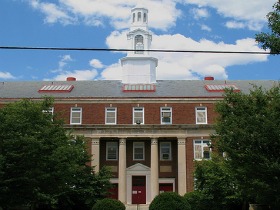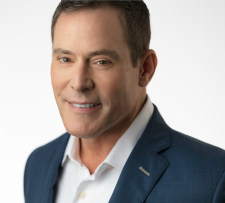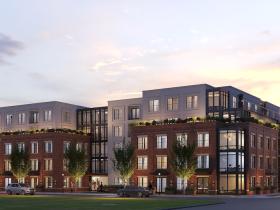 How Should DC Schools Balance Diversity?
How Should DC Schools Balance Diversity?
✉️ Want to forward this article? Click here.
This month, Greater Greater Washington’s David Alpert has been examining education issues in the District. Last week, Alpert considered the question of how long a school can be both diverse and high-quality; this morning, he looked at a few successful models in other states that do just that.

Raleigh, NC, for example, consciously drew boundaries to include lower-income youth in every school, but such that these students comprised no more than 35 percent of the population.
From Greater Greater Washington:
“Raleigh found that the 35% threshold was a good one to include many kids from disadvantaged backgrounds who could benefit from being a part of a school with more privileged kids, but not so much as to create overconcentration and diminish the outcomes for the highest-performing students.”
Alpert considered various ways that DC schools could accomplish this. “There are essentially 2 ways to include out-of-boundary, poorer children in the most exclusive public schools: make the schools bigger, and entice some in-boundary families to go elsewhere,” said Alpert. He noted that Mary Cheh was pushing to expand the highly regarded Deal Middle School in Tenleytown, and he explored the option of putting magnet schools in poorer neighborhoods and allotting space for some number of local kids, noting precedents in New York and Tulsa, Oklahoma.
The Greater Greater Washington series is worth reading for the comments alone: judging by the number of GGW’s readers who have been chiming in with opinions, experiences and points of comparison on every post, it seems like DC residents are hungry to discuss the state of DC public schools.
On this issue, several point out that DC is far from being able to consider a policy like the one Alpert outlines: even some of the better schools have a much higher percentage of poor students than those in Raleigh.
As one commenter said “The only conceivable solution to the problem of DCPS is that poor kids as a percentage of all students has to come down. Either by increasing the number of middle-class kids, reducing the number of poor kids, or both.”
We look forward to Alpert’s next post.
Similar Posts:
See other articles related to: greater greater washington, schools
This article originally published at https://dc.urbanturf.com/articles/blog/how_should_dc_schools_balance_diversity/5805.
Most Popular... This Week • Last 30 Days • Ever

UrbanTurf takes a look at the options DC homeowners and residents have to take advant... read »

A major new residential development is on the boards for a series of properties near ... read »

A new report from DC’s Office of Revenue Analysis highlights how millennials and wo... read »

The building is the second proposal for a pair of aging office buildings in downtown ... read »

The number of neighborhoods in DC where the median home price hit or exceeded $1 mill... read »
DC Real Estate Guides
Short guides to navigating the DC-area real estate market
We've collected all our helpful guides for buying, selling and renting in and around Washington, DC in one place. Start browsing below!
First-Timer Primers
Intro guides for first-time home buyers
Unique Spaces
Awesome and unusual real estate from across the DC Metro













